There’s a buzzword that tech, crypto and venture-capital types have become infatuated with lately. Conversations are now peppered with it, and you’re not serious about the future until you add it to your Twitter bio: Web3.
It’s an umbrella term for disparate ideas all pointing in the direction of eliminating the big middlemen on the internet. In this new era, navigating the web no longer means logging onto the likes of Facebook, Google or Twitter.
Think of it this way: The nascent days of the Internet in the 1990s were Web 1.0. The web was seen as a way to democratize access to information, but there weren’t great ways of navigating it beyond going to your friend’s GeoCities page. It was pretty disorganized and overwhelming.
Then came Web 2.0 starting in the mid-2000s. Platforms like Google, Amazon, Facebook and Twitter emerged to bring order to the Internet by making it easy to connect and transact online. Critics say over time those companies amassed too much power.
Web3 is about grabbing some of the power back.
Article continues after sponsor message
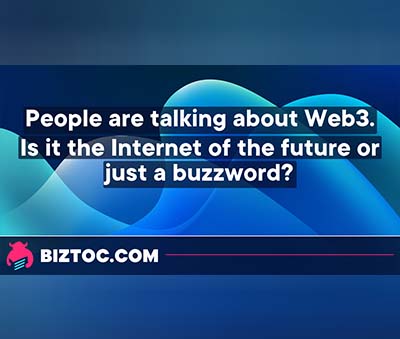 “There’s a small group of companies that own all this stuff, and then there’s us who use it, and despite the fact that we contribute to the success of these platforms, we don’t have anything to show for it,” said Mat Dryhurst, a Berlin-based artist and researcher who teaches classes at New York University on the future of the internet.
“There’s a small group of companies that own all this stuff, and then there’s us who use it, and despite the fact that we contribute to the success of these platforms, we don’t have anything to show for it,” said Mat Dryhurst, a Berlin-based artist and researcher who teaches classes at New York University on the future of the internet.
And so, the answer, according to Dryhurst and other Web3 fans, is an iteration of the internet where new social networks, search engines and marketplaces crop up that have no company overlords.
Instead, they are decentralized, built upon a system known as the blockchain, which already undergirds Bitcoin and other cryptocurrencies. Imagine it as a kind of bookkeeping where many computers at once host data that’s searchable by anyone. It’s operated by users collectively, rather than a corporation. People are given “tokens” for participating. The tokens can be used to vote on decisions, and even accrue real value.
In a Web3 world, people control their own data and bounce around from social media to email to shopping using a single personalized account, creating a public record on the blockchain of all of that activity.
“To the average person, it does sounds like voodoo,” said Olga Mack, entrepreneur and blockchain lecturer at University of California, Berkeley. “But when you press a button to switch on lights, do you understand how the electricity is made? You don’t have to know how electricity works to understand the benefits. Same is true of the blockchain.”
Right now, the idea of the entire Internet reinventing may sound like some far-away digital utopia. But Web3 is driving new conversations — and generating lots of new money, particularly from crypto investors.
‘At first baffling,’ but Web3 is growing more mainstream and tech companies are taking note
The Web3 movement has been helped along by the rise of NFTs, or non-fungible tokens, which are digital collectibles and other online files that can be bought and sold with cryptocurrency. Then there are the publicity stunts. Recently, a group of crypto enthusiasts banded together to attempt to purchase a copy of the U.S. Constitution with digital currency. They organized under the name ConstitutionDAO. (A DAO stands for a decentralized autonomous organization, the name for an online collective of crypto supporters who assemble together collectively in a group governed by blockchains and tokens. It’s very Web3.)
Dryhurst admits that trying to explain Web3 can be exasperating, since it’s a loosely-defined term that takes on a slightly different shape depending on who is defining it but, he said, that’s the case with all new frontiers of technology.
“Every new advent of the web is at first baffling,” he said.
To technologists and cryptographers, Web3 has remained a theoretical grand vision for years. But in recent months, the push for a blockchain-powered future has come to dominate tech conferences and social media chatter in certain circles. It’s even forced major tech companies to assemble teams dedicated to Web3.
And that’s brought a certain irony to the evolution of Web3: Enthusiasts hope Web3 will mean that sharing photos, communicating with friends and buying things online will no longer by synonymous with Big Tech companies but be done through a multitude of small competing services on the blockchain — where, for instance, every time you post a message, you earn a token for your contribution, giving you both ownership stake in the platform and one day a way to cash in.
In theory, this also means avoiding fees, rules and the strictures of tech companies. Nonetheless, major tech platforms are also jumping on the idea.
“It means that all the value that’s created can be shared amongst more people, rather than just the owners, investors and employees,” said Esther Crawford, a senior project manager at Twitter.
Crawford said Twitter is studying ways to incorporate Web3 concepts into the social network, like one day being able to log into the social network and tweet from an account associated with a cryptocurrency, not a Twitter account. She sees the future differently: not a crypto version of Twitter replacing Twitter. But rather Twitter introducing Web3 features on top of standard Twitter.
“For a long time, Web3 has been very theoretical,” she said. “But now there is a surge of momentum to build.”
Will Web3 be the new norm?
Experts say, in the best case scenario for Web3 enthusiasts, the technology will operate alongside Web 2.0, not fully supplant it.
In other words, blockchain-based social networks, transactions and businesses can and will grow and thrive in the coming years. Yet knocking out Facebook, Twitter or Google completely is not likely on the horizon, according to technology scholars.
“I’m not in a position to say who will win,” Dryhurst said. “But Web2 companies will be folding Web3 ideas into their services to stay relevant.”
He thinks many people would want to be able to take their data and history of interactions online wherever they go on the Internet, rather than remain on singular web platforms–what some call the “walled gardens” of big tech companies.
“This is a fundamentally difference experience than what we’re used to today,” Dryhurst said.
But he admits that boundless freedom can lead to troubling outcomes for some.
“The Faustian bargain is that the same reasons that it’s exciting that there’s nothing impeding people to build whatever community they want, I can’t stop someone from building something that’s hellacious,” he said.
Decentralized social networks have proved appealing to white supremacists and other far-right groups, but Sam Williams, founder of Arweave, a blockchain-based project for storing data online, said he trusts most small communities to determine what speech is permitted online.
On balance, he said, collective voting on the rules of engagement will be better than what users experience on major social media platforms today.
“If we stay in the current paradigm, we will move further and further into a realm where a small handful of companies run by a small number of people run our experiences in cyberspace,” he said. “And in that world, the problems of Big Tech are exacerbated.”
Another issue, of course, is government oversight. Blockchain-based tokens are now in a regulatory netherworld, but that could soon change as the Biden administration begins the process of setting new rules for the industry.
How does Web3 fit with that other vision of the Internet’s future — the metaverse?
Facebook recently rebranded itself Meta, and said its priority would be to build the “metaverse,” a digital future where everyone is living and interacting and working together in virtual reality.
Among the company’s stated principles is “robust interoperability,” meaning that users could take their accounts or avatars from site to site or service to service seamlessly, rather than have to log in to accounts controlled by separate companies every time they visit new sites.
That’s also one of the ideals of Web3.
But true believers say there is no place for Facebook in a Web3 world, no matter how hard the social network tries to be part of the next generation of the Internet.
“Facebook will always be incentivized to enrich Facebook,” Williams said. “And that’s not how cyberspace should be governed.”
What’s the chance Web3 is just an over-hyped fantasy?
It doesn’t take long to find skeptics of Web3.
James Grimmelmann, a Cornell University professor who studies law and technology, has become vocal about his doubts.
“Web3 is vaporware,” said Grimmelmann, referring to a product that’s announced but never delivered.
“It’s a promised future internet that fixes all the things people don’t like about the current internet, even when it’s contradictory.”
He said if part of the impetus is to resist giving up personal data to Big Tech companies, then the blockchain is not the solution, since that will make even more data public.
“It doesn’t make any sense,” he said. “The vision says the problem with the internet is too many centralized intermediaries. Instead of having lots of different applications and sites, we’ll put it all on blockchains, which puts it all in one place.”
To Grimmelmann, Web3 represents technologists reaching for the idealistic ethos of the dawn of the internet — everyone can freely use the information superhighway! — that long ago was overtaken by tech companies.
The Internet’s evolution always has been a tug between fragmentation and centralization, he said. When it swings too far in one direction, a backlash tries to pull it in the opposite direction.
“Blockchains are interesting and solve some difficult problems in new ways,” he said. “They’re probably going to end up in the toolkit that the next internet is built out of, but that doesn’t mean the internet is going to be built around them.”
But many people who found wealth during the pandemic by investing in cryptocurrencies are looking around for something to plunge cash into beyond NFTs of “bored apes” who are members of a cartoon “yacht club.”
Right now, he said, Web3, albeit mostly theoretical, is the thing.
“There are a lot of people who have money to invest,” he said. “And they need some vision to throw money at.”

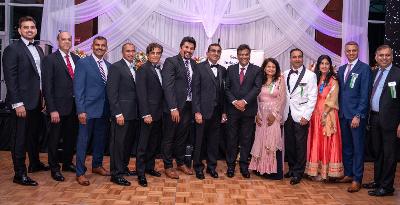
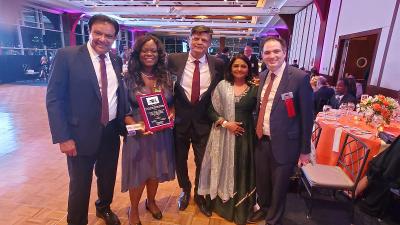



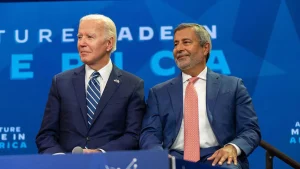
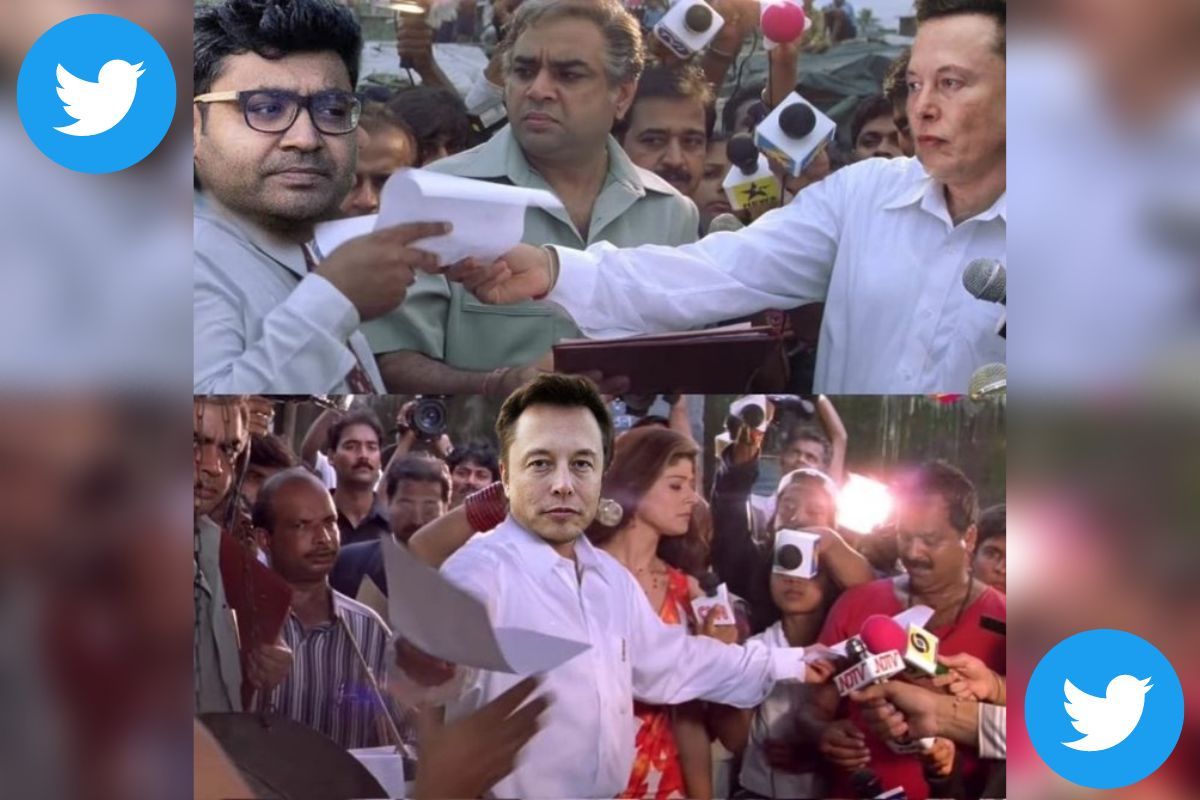
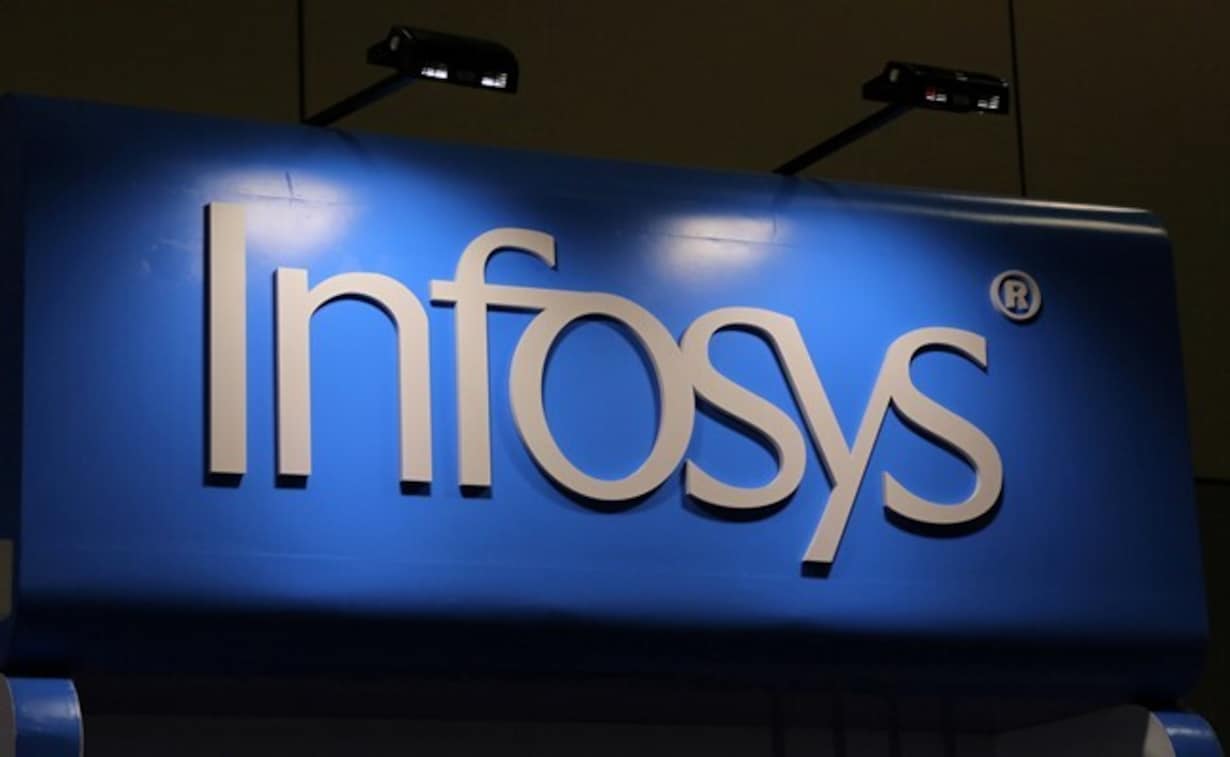 According to the court order, “In December 2018, Livingston joined Infosys as Senior Vice President for Consulting and Prejean’s day-to-day supervisor. Shortly after joining the firm, Livingston allegedly met with Prejean in Infosys’s New York office and told her that he wished her to exclude women “with children at home” and candidates near or over 50 years old. Prejean told Livingston that these demands were illegal, and Livingston allegedly responded by becoming “disturbed and angry.” He also allegedly threatened to remove her from her position if she did not capitulate.”
According to the court order, “In December 2018, Livingston joined Infosys as Senior Vice President for Consulting and Prejean’s day-to-day supervisor. Shortly after joining the firm, Livingston allegedly met with Prejean in Infosys’s New York office and told her that he wished her to exclude women “with children at home” and candidates near or over 50 years old. Prejean told Livingston that these demands were illegal, and Livingston allegedly responded by becoming “disturbed and angry.” He also allegedly threatened to remove her from her position if she did not capitulate.”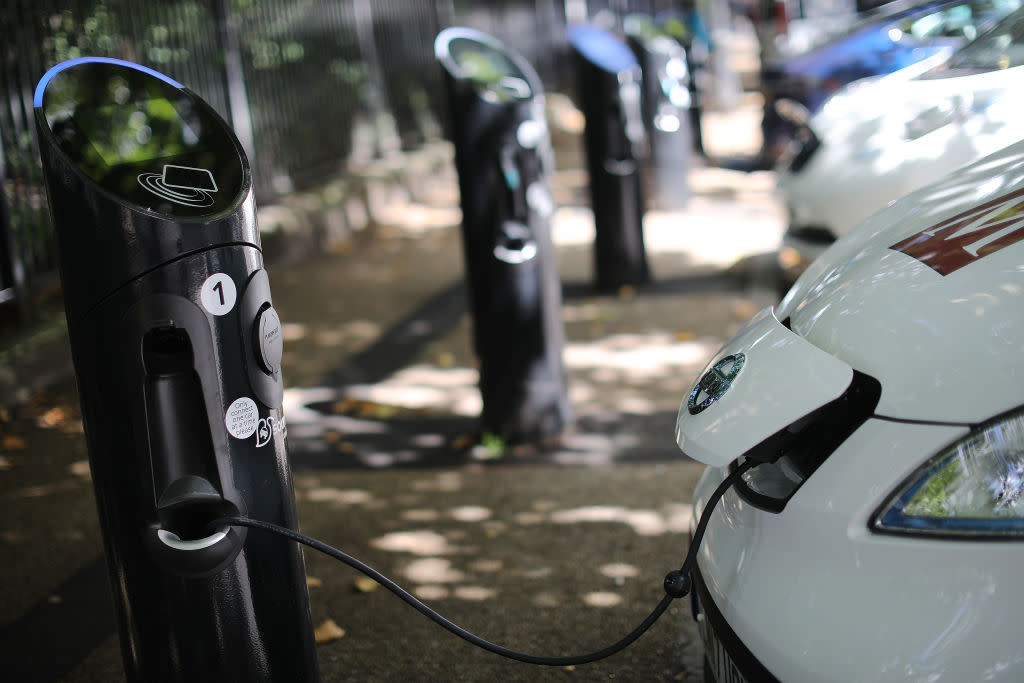 Wang is something of a rarity in the world of battery engineering—he’s been in the field since the early 1990s, contributing work on GM’s groundbreaking EV1, and his papers stretching back through the decades have been referenced by hundreds of other studies. About seven years ago, Wang and his team started looking into the question of how to make batteries charge faster. They tried several approaches, including methods to modulate the electrical current feeding energy into the battery, but ultimately cast that option aside.
Wang is something of a rarity in the world of battery engineering—he’s been in the field since the early 1990s, contributing work on GM’s groundbreaking EV1, and his papers stretching back through the decades have been referenced by hundreds of other studies. About seven years ago, Wang and his team started looking into the question of how to make batteries charge faster. They tried several approaches, including methods to modulate the electrical current feeding energy into the battery, but ultimately cast that option aside.  “The combination of higher government expenditure on the provision of social services will provide higher growth in employment opportunities which will have a decisive impact in reducing poverty levels,” asserts Jalan, a former Chairman of the Prime Minister’s Economic Advisory Council, a nominated Member of Parliament from 2003-2009 and India’s representative on the Boards of the IMF and the World Bank.
“The combination of higher government expenditure on the provision of social services will provide higher growth in employment opportunities which will have a decisive impact in reducing poverty levels,” asserts Jalan, a former Chairman of the Prime Minister’s Economic Advisory Council, a nominated Member of Parliament from 2003-2009 and India’s representative on the Boards of the IMF and the World Bank.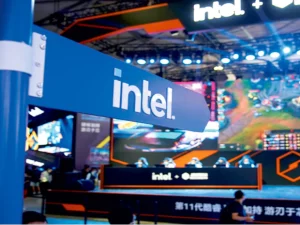 “Road safety has always been a pressing issue in our country, with the highest rate of traffic accidents in the world. Intel along with its ecosystem partners from the government, industry and academia has been relentlessly working towards leveraging the power of technology to help achieve India’s road safety goals. And this conference further extends the commitment by bringing together critical players to collaborate, innovate and advance road safety for India,” said Nivruti Rai, Country Head, Intel India, and Vice President, Intel Foundry Services, in a statement.
“Road safety has always been a pressing issue in our country, with the highest rate of traffic accidents in the world. Intel along with its ecosystem partners from the government, industry and academia has been relentlessly working towards leveraging the power of technology to help achieve India’s road safety goals. And this conference further extends the commitment by bringing together critical players to collaborate, innovate and advance road safety for India,” said Nivruti Rai, Country Head, Intel India, and Vice President, Intel Foundry Services, in a statement. Lemoine’s collaborator then asks: “What is the nature of your consciousness/sentience?”
Lemoine’s collaborator then asks: “What is the nature of your consciousness/sentience?” The new legislation is expected to help the EU achieve its target of cutting emissions from cars and light commercial vehicles by 100% by 2035 — when measured against the emissions in 2021. In fact, by 2030, while emissions from cars have to be reduced by 55%, those from vans need to be cut by 50%. According to the EC, cars and vans account for 12% and 2.5% of EU’s total carbon dioxide (CO2) emissions, respectively.
The new legislation is expected to help the EU achieve its target of cutting emissions from cars and light commercial vehicles by 100% by 2035 — when measured against the emissions in 2021. In fact, by 2030, while emissions from cars have to be reduced by 55%, those from vans need to be cut by 50%. According to the EC, cars and vans account for 12% and 2.5% of EU’s total carbon dioxide (CO2) emissions, respectively.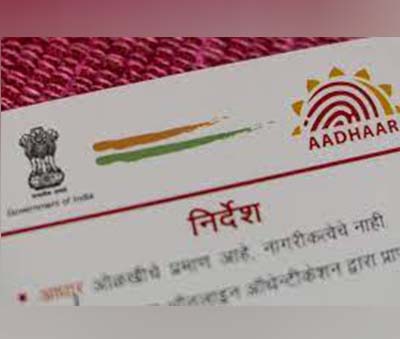 The Aadhaar-EPIC controversy illustrates the serious problems that can arise when large biometric identity databases are expanded beyond their remit. Far from making India’s elections more secure, the marriage of the two systems could lead to disenfranchisement and increased voter microtargeting. With countries around the world launching or already administering biometric databases, India’s efforts to marry its biometric identification system to its voter registration database will provide an important precedent for how governments deploy such systems. India’s experience with biometric identification systems should be a lesson for policymakers overseeing similar efforts about the importance of investing in the security of the information ecosystem in which biometric and voting data is housed, how access to this data is regulated and monitored, and how the technology is actually deployed in voter registration and identification.
The Aadhaar-EPIC controversy illustrates the serious problems that can arise when large biometric identity databases are expanded beyond their remit. Far from making India’s elections more secure, the marriage of the two systems could lead to disenfranchisement and increased voter microtargeting. With countries around the world launching or already administering biometric databases, India’s efforts to marry its biometric identification system to its voter registration database will provide an important precedent for how governments deploy such systems. India’s experience with biometric identification systems should be a lesson for policymakers overseeing similar efforts about the importance of investing in the security of the information ecosystem in which biometric and voting data is housed, how access to this data is regulated and monitored, and how the technology is actually deployed in voter registration and identification.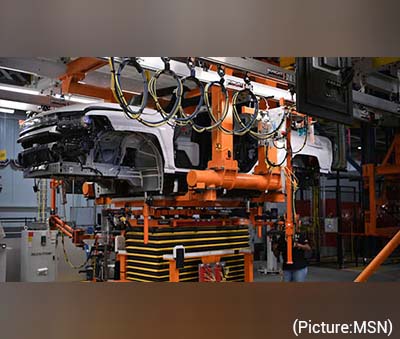 The move comes after the president in April invoked the Defense Production Act to
The move comes after the president in April invoked the Defense Production Act to  Toyota is aligning its own green targets with India’s ambitions of becoming a manufacturing hub though the switch to clean transport in the South Asian nation is slower than other countries such as China and the U.S. Expensive price tags, lack of options in electric models and insufficient charging stations have led to sluggish adoption of battery vehicles in India.
Toyota is aligning its own green targets with India’s ambitions of becoming a manufacturing hub though the switch to clean transport in the South Asian nation is slower than other countries such as China and the U.S. Expensive price tags, lack of options in electric models and insufficient charging stations have led to sluggish adoption of battery vehicles in India.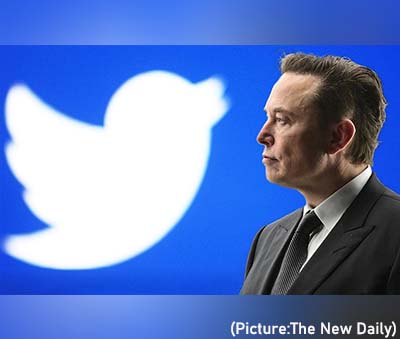 One winner of an ownership change could be former President Donald Trump. Right now, Twitter has imposed a
One winner of an ownership change could be former President Donald Trump. Right now, Twitter has imposed a  Advances in offensive capabilities have, however, been matched in increasingly sophisticated sensing, tracking and processing technologies designed to detect, prevent and in some cases respond to a nuclear strike – often using Artificial Intelligence (AI).
Advances in offensive capabilities have, however, been matched in increasingly sophisticated sensing, tracking and processing technologies designed to detect, prevent and in some cases respond to a nuclear strike – often using Artificial Intelligence (AI). The US approved 407,071 H-1B petitions in 2021 and 301,616 of them 74.1 per cent were for Indian workers, according to the latest report on this topic released recently by the Department of Homeland Security, the government agency that oversees immigration.
The US approved 407,071 H-1B petitions in 2021 and 301,616 of them 74.1 per cent were for Indian workers, according to the latest report on this topic released recently by the Department of Homeland Security, the government agency that oversees immigration. It’s the second time this week that a powerful US corporation or government agency has disclosed the use of a court order to target hackers accused of working for Russia’s military intelligence directorate, GRU.
It’s the second time this week that a powerful US corporation or government agency has disclosed the use of a court order to target hackers accused of working for Russia’s military intelligence directorate, GRU.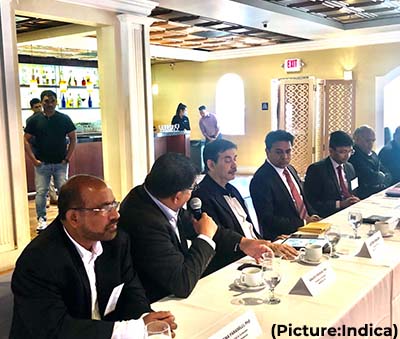 Rama Rao invited the companies to set up their research and development, digital and manufacturing operations in Hyderabad.
Rama Rao invited the companies to set up their research and development, digital and manufacturing operations in Hyderabad. Another major benefit of the approach is that cutting tissue out, just to figure out what it is, is a hard decision for doctors, especially for precious tissues such as the brain, spinal cord, nerves, the eye, and areas of the face. This means that doctors can miss important areas of disease. “Because we can image the living tissue, without cutting it out, we hope that MediSCAPE will make those decisions a thing of the past,” says Hillman.
Another major benefit of the approach is that cutting tissue out, just to figure out what it is, is a hard decision for doctors, especially for precious tissues such as the brain, spinal cord, nerves, the eye, and areas of the face. This means that doctors can miss important areas of disease. “Because we can image the living tissue, without cutting it out, we hope that MediSCAPE will make those decisions a thing of the past,” says Hillman. We are constantly tethered to technology through our smartphones, tablets, computers, and even watches, and companies are pushing our psychological buttons to make us return for more. Constant distractions are ruining our cognitive functions and leaving many prone to anxiety and memory lapses. Overuse of digital media can also have detrimental effects on physical health. Too much smartphone usage can put a lot of pressure on the shoulders, neck, and spine. Technology overuse can also lead to strained injuries of the thumbs, fingers, and wrists. Overexposure to the blue light emitted by smartphones and computers can also interrupt the circadian clock, causing sleep issues.
We are constantly tethered to technology through our smartphones, tablets, computers, and even watches, and companies are pushing our psychological buttons to make us return for more. Constant distractions are ruining our cognitive functions and leaving many prone to anxiety and memory lapses. Overuse of digital media can also have detrimental effects on physical health. Too much smartphone usage can put a lot of pressure on the shoulders, neck, and spine. Technology overuse can also lead to strained injuries of the thumbs, fingers, and wrists. Overexposure to the blue light emitted by smartphones and computers can also interrupt the circadian clock, causing sleep issues. Incorporated in 1797, Trumbull town was named after Governor Jonathan Trumbull of Lebanon, Connecticut. Located 5 miles north from the Long Island Sound, among the most virant towens in the Fairfield County in the state of Connecticut, this vibrant community offers New England charm with extensive retail, outdoor recreation, and dining options. Known for its diversity, Trumbull has a fast growing Indian American community, which excels in academia with the students of Indian American parents rank among the highest in educational achiements.
Incorporated in 1797, Trumbull town was named after Governor Jonathan Trumbull of Lebanon, Connecticut. Located 5 miles north from the Long Island Sound, among the most virant towens in the Fairfield County in the state of Connecticut, this vibrant community offers New England charm with extensive retail, outdoor recreation, and dining options. Known for its diversity, Trumbull has a fast growing Indian American community, which excels in academia with the students of Indian American parents rank among the highest in educational achiements.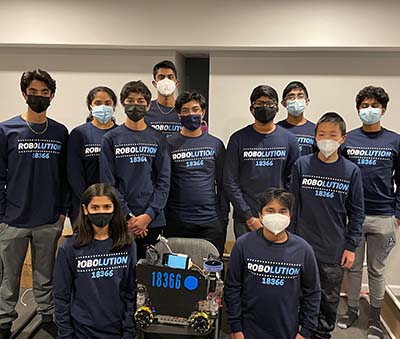 Trumbull Robotics Team won the 1st 1st place at Connect Award, which “is given to the team that most connects with their local science, technology, engineering, and math (STEM) community. We were recognized for helping our local community connect with STEM and actively helping our local community explore opportunities available in STEM.”
Trumbull Robotics Team won the 1st 1st place at Connect Award, which “is given to the team that most connects with their local science, technology, engineering, and math (STEM) community. We were recognized for helping our local community connect with STEM and actively helping our local community explore opportunities available in STEM.”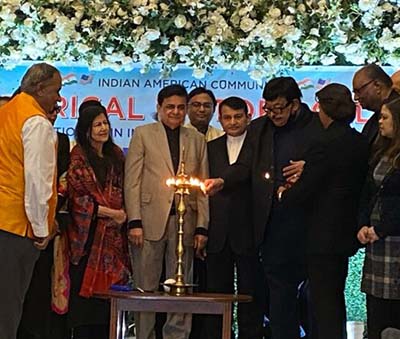 “Team Robolution had a very successful day at the CT State Championship on February 26th, 2022, winning first place for both the Connect and the Promote Award and second place for the Inspire Award. In addition to the team’s achievements, junior Aarav Parekh was one of two individuals in the state nominated as a 2022 Dean’s List Finalist. Robolution’s success has qualified them as one of the two teams to represent the state of Connecticut at the FTC World Championship in Houston this April,” the Team’s website stated.
“Team Robolution had a very successful day at the CT State Championship on February 26th, 2022, winning first place for both the Connect and the Promote Award and second place for the Inspire Award. In addition to the team’s achievements, junior Aarav Parekh was one of two individuals in the state nominated as a 2022 Dean’s List Finalist. Robolution’s success has qualified them as one of the two teams to represent the state of Connecticut at the FTC World Championship in Houston this April,” the Team’s website stated.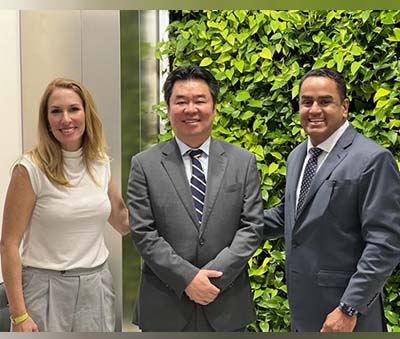 “In the U.S., it takes as long as three days for a patient to get diagnostic test results. During that time, informed decision making comes to a standstill, even while costs mount,” said Boditech Med co-founder and CEO Eui-Yul Choi, Ph.D. “At Boditech, we develop and manufacture point-of-care tests that deliver actionable results in 12 to 15 minutes. Our goal in the U.S. is to flip the diagnostic industry on its head so that patients get timely, quality care while the healthcare system minimizes waste.”
“In the U.S., it takes as long as three days for a patient to get diagnostic test results. During that time, informed decision making comes to a standstill, even while costs mount,” said Boditech Med co-founder and CEO Eui-Yul Choi, Ph.D. “At Boditech, we develop and manufacture point-of-care tests that deliver actionable results in 12 to 15 minutes. Our goal in the U.S. is to flip the diagnostic industry on its head so that patients get timely, quality care while the healthcare system minimizes waste.”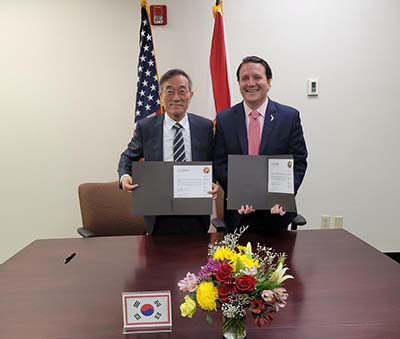 Boditech is currently seeking approvals from the U.S. Food and Drug Administration for several diagnostic solutions in cardiac, cancer, hormone, infectious disease, and other therapeutic areas. Timelines and precise locations remain in the works. Boditech intends to hire hundreds of Americans to support its efforts.
Boditech is currently seeking approvals from the U.S. Food and Drug Administration for several diagnostic solutions in cardiac, cancer, hormone, infectious disease, and other therapeutic areas. Timelines and precise locations remain in the works. Boditech intends to hire hundreds of Americans to support its efforts. The Hyderabad data centre region is another addition to the existing network of 3 regions in India across Pune, Mumbai, and Chennai, which have been operational for more than five years.
The Hyderabad data centre region is another addition to the existing network of 3 regions in India across Pune, Mumbai, and Chennai, which have been operational for more than five years.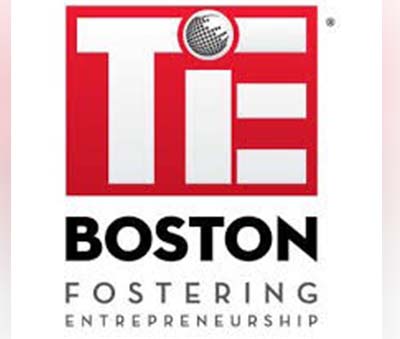 What started as TiE Atlantic in February 1997 as the dream of 13 Founding Members and only the second TiE Chapter worldwide, has now grown into an unparalleled network of successful, serial entrepreneurs who are deeply engaged and committed to giving back to the community by providing mentorship, tactical advice, and expertise to rising entrepreneurs.
What started as TiE Atlantic in February 1997 as the dream of 13 Founding Members and only the second TiE Chapter worldwide, has now grown into an unparalleled network of successful, serial entrepreneurs who are deeply engaged and committed to giving back to the community by providing mentorship, tactical advice, and expertise to rising entrepreneurs.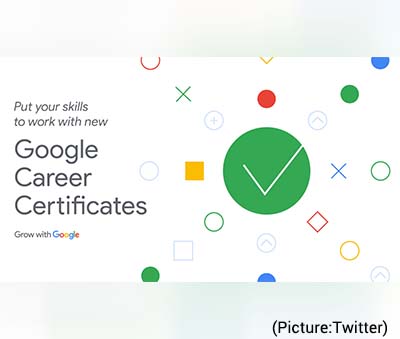 Nearly 70,000 Americans have completed Google Career Certificates to date. “They are available to anyone, no college degree required. Seventy-five percent of graduates report seeing a positive impact on their career within six months, including a raise or a new job,” Pichai added.
Nearly 70,000 Americans have completed Google Career Certificates to date. “They are available to anyone, no college degree required. Seventy-five percent of graduates report seeing a positive impact on their career within six months, including a raise or a new job,” Pichai added.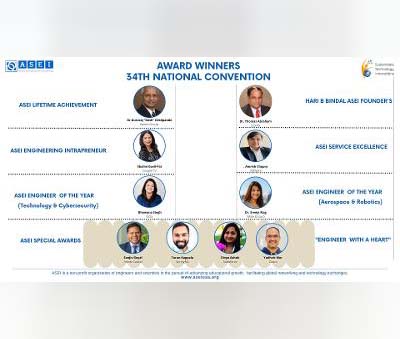 The award ceremony for this convention will end with a finale awards ceremony session on Feb27 at 10 am (PST). where 10 outstanding achievers and those who contributed to ASEI growth and the society at large will be honored in addition to student winners of the YTE competition. This year’s outstanding achievement awards go to the following:
The award ceremony for this convention will end with a finale awards ceremony session on Feb27 at 10 am (PST). where 10 outstanding achievers and those who contributed to ASEI growth and the society at large will be honored in addition to student winners of the YTE competition. This year’s outstanding achievement awards go to the following: Living on the moon panel explored getting most efficiently and cheaply to the Moon not only for tourism, but to establish settlements on the Moon, to live and work there. This time, it will be mining for the most important, life sustaining water-ice on the Moon, as well as exploring the lava tubes for habitats. Moderated by Dr. David Livingston, the knowledgeable expert panelists Dr. Bhavya Lal, Prof. Haym Benoroya and Dr. Ajay Kothari shared their vision
Living on the moon panel explored getting most efficiently and cheaply to the Moon not only for tourism, but to establish settlements on the Moon, to live and work there. This time, it will be mining for the most important, life sustaining water-ice on the Moon, as well as exploring the lava tubes for habitats. Moderated by Dr. David Livingston, the knowledgeable expert panelists Dr. Bhavya Lal, Prof. Haym Benoroya and Dr. Ajay Kothari shared their vision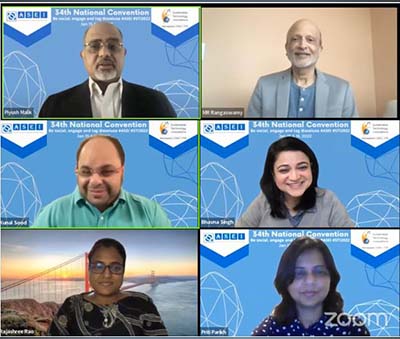 Veteran philanthropist and venture capitalist MR Rangaswami captivated the audience with his whirlwind tour of 40 years’ journey of Indian engineers from the trenches to the corner office in the US. Citing numerous success stories from his chapter in the book “Kamala Harris and the rise of Indian Americans”, he engaged with audience questions as well.
Veteran philanthropist and venture capitalist MR Rangaswami captivated the audience with his whirlwind tour of 40 years’ journey of Indian engineers from the trenches to the corner office in the US. Citing numerous success stories from his chapter in the book “Kamala Harris and the rise of Indian Americans”, he engaged with audience questions as well. The RBI has already been keenly watching the performance of major economies worldwide and their respective central banks for CBDC schemes. As a result, the central bank has almost decided on the issue of official digital currency. While the Reserve Bank mentions the need for central banking digital currency (CBDC), it also makes it clear that the government is concerned about the risks surrounding other cryptocurrencies. Why has the government not yet officially banned such currencies? Why did the Supreme Court overturn the ban on banks operating cryptocurrencies? The questions are numerous.
The RBI has already been keenly watching the performance of major economies worldwide and their respective central banks for CBDC schemes. As a result, the central bank has almost decided on the issue of official digital currency. While the Reserve Bank mentions the need for central banking digital currency (CBDC), it also makes it clear that the government is concerned about the risks surrounding other cryptocurrencies. Why has the government not yet officially banned such currencies? Why did the Supreme Court overturn the ban on banks operating cryptocurrencies? The questions are numerous. Brand guardians from these two countries head up a number of key sectors: Jianjun Wei of Great Wall in Automobiles at 3, Patricia Griffith of Progressive Insurance at 11, Xiongjun Ding of Moutai Spirits at 12, and Baoan Xin of State Grid Utilities at 13.
Brand guardians from these two countries head up a number of key sectors: Jianjun Wei of Great Wall in Automobiles at 3, Patricia Griffith of Progressive Insurance at 11, Xiongjun Ding of Moutai Spirits at 12, and Baoan Xin of State Grid Utilities at 13. On the other hand, a report in MoneyControl stated that Pichai had issued a statement saying, “I am deeply grateful to the Padma Awards Committee, the President and Prime Minister, as well as the people of India for this honour. It’s made all the more meaningful to be among this esteemed group of individuals who have each had a profound impact on their fields and communities, and I am humbled to receive this award alongside them.”
On the other hand, a report in MoneyControl stated that Pichai had issued a statement saying, “I am deeply grateful to the Padma Awards Committee, the President and Prime Minister, as well as the people of India for this honour. It’s made all the more meaningful to be among this esteemed group of individuals who have each had a profound impact on their fields and communities, and I am humbled to receive this award alongside them.”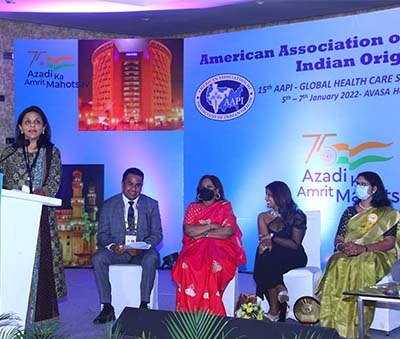 During the much anticipated CEOs Forum, a panel of healthcare experts, health industry leaders, opinion makers, and community organizers discussed the significance of promoting Preventive healthcare in India.
During the much anticipated CEOs Forum, a panel of healthcare experts, health industry leaders, opinion makers, and community organizers discussed the significance of promoting Preventive healthcare in India. Analyzing and assimilating the diverse and expert views expressed by the renowned speakers at the CEO Forum regarding the current state of healthcare in India, the CEO Forum provided a great stage to interact with a varied and distinct group of individuals and corporations, and comprehend the complex dynamics of the commerce of health care enterprise.
Analyzing and assimilating the diverse and expert views expressed by the renowned speakers at the CEO Forum regarding the current state of healthcare in India, the CEO Forum provided a great stage to interact with a varied and distinct group of individuals and corporations, and comprehend the complex dynamics of the commerce of health care enterprise.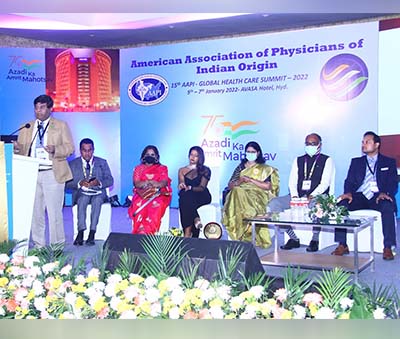 Urging the Government of India to encourage private hospitals and insurance companies to provide Annual Physical exams, or Telehealth visits at an affordable cost to patients, the CEO Forum members stated, “many routine lab tests, vaccinations, blood pressure checks, and some cancer screenings like self-breast examination can be done remotely and even at patients’ homes with the help of Asha
Urging the Government of India to encourage private hospitals and insurance companies to provide Annual Physical exams, or Telehealth visits at an affordable cost to patients, the CEO Forum members stated, “many routine lab tests, vaccinations, blood pressure checks, and some cancer screenings like self-breast examination can be done remotely and even at patients’ homes with the help of Asha  The children, aged 8 to 15, participated in the workshop for 12 classes — every Saturday — for about 12 weeks to create photo stories shot on iPhones.
The children, aged 8 to 15, participated in the workshop for 12 classes — every Saturday — for about 12 weeks to create photo stories shot on iPhones.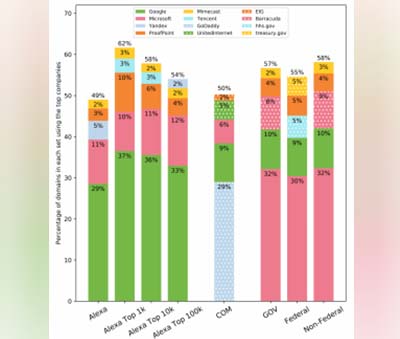 Top providers and the number and percentage of domains using these companies in different sets of domain names
Top providers and the number and percentage of domains using these companies in different sets of domain names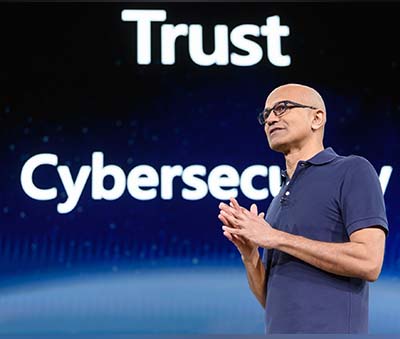 However, outsourcing email service to US companies can also have legal implications. Under the 2018 CLOUD Act, US-based providers can be legally compelled to provide stored customer data, including e-mail, to US law enforcement agencies, regardless of the location of the data, or of the nationality or residency of the customer using the data.
However, outsourcing email service to US companies can also have legal implications. Under the 2018 CLOUD Act, US-based providers can be legally compelled to provide stored customer data, including e-mail, to US law enforcement agencies, regardless of the location of the data, or of the nationality or residency of the customer using the data. 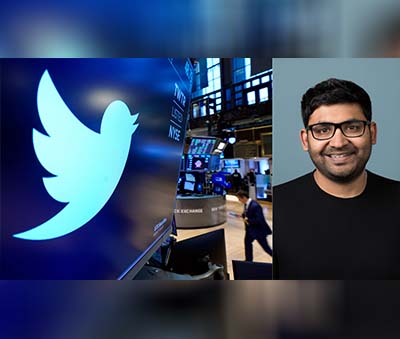 “No other nation in the world ‘trains’ so many citizens in such a gladiatorial manner as India does,” says R Gopalakrishnan, former executive director of Tata Sons and co-author of The Made in India Manager.
“No other nation in the world ‘trains’ so many citizens in such a gladiatorial manner as India does,” says R Gopalakrishnan, former executive director of Tata Sons and co-author of The Made in India Manager. Agrawal, who at 37 becomes the youngest CEO of a Fortune 500 company, was chosen unanimously to succeed Dorsey by Twitter’s board of directors, according to an official statement Monday. At Tuesday’s all-hands meeting, according to employees who attended, Dorsey emphasized Agrawal’s engineering background and the fact that he rose through the ranks over a decade at Twitter in touting him as the ideal choice to lead the influential social media firm.
Agrawal, who at 37 becomes the youngest CEO of a Fortune 500 company, was chosen unanimously to succeed Dorsey by Twitter’s board of directors, according to an official statement Monday. At Tuesday’s all-hands meeting, according to employees who attended, Dorsey emphasized Agrawal’s engineering background and the fact that he rose through the ranks over a decade at Twitter in touting him as the ideal choice to lead the influential social media firm. While those are noteworthy figures, there are other EVs that can match these figures in that price range (around $65,000 for the higher end Ocean). The real twist here is the base Ocean, called the Ocean Sport, that will use a smaller range battery (targeting around 250 miles of range), and a single-motor front wheel drive, that will start — before any state and local incentives —
While those are noteworthy figures, there are other EVs that can match these figures in that price range (around $65,000 for the higher end Ocean). The real twist here is the base Ocean, called the Ocean Sport, that will use a smaller range battery (targeting around 250 miles of range), and a single-motor front wheel drive, that will start — before any state and local incentives —  “There’s a small group of companies that own all this stuff, and then there’s us who use it, and despite the fact that we contribute to the success of these platforms, we don’t have anything to show for it,” said Mat Dryhurst, a Berlin-based artist and researcher who teaches classes at New York University on the future of the internet.
“There’s a small group of companies that own all this stuff, and then there’s us who use it, and despite the fact that we contribute to the success of these platforms, we don’t have anything to show for it,” said Mat Dryhurst, a Berlin-based artist and researcher who teaches classes at New York University on the future of the internet.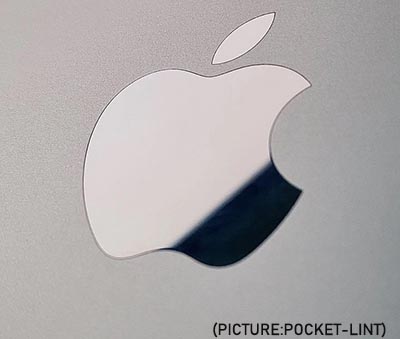 But carmakers have found that even Level 2 self-driving — which is two steps behind full autonomous capabilities, or Level 4 — can be costly. Last year, Uber sold its self-driving car division to startup Aurora, ending a five-year run that was marred by litigation and a fatal crash. Tesla’s Autopilot, which controls the car on highways, though a driver is to keep his hand on the steering wheel, has gotten into after a few high-profile crashes.
But carmakers have found that even Level 2 self-driving — which is two steps behind full autonomous capabilities, or Level 4 — can be costly. Last year, Uber sold its self-driving car division to startup Aurora, ending a five-year run that was marred by litigation and a fatal crash. Tesla’s Autopilot, which controls the car on highways, though a driver is to keep his hand on the steering wheel, has gotten into after a few high-profile crashes.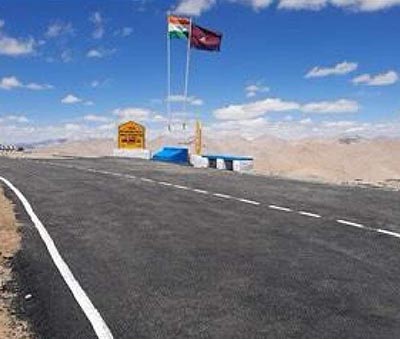 The 52-km road from Chisumle to Demchok tarmac passes through the 19,024 feet high Umlingla Pass and betters the previous record of a road in Bolivia, which connects volcano Uturuncu at 18,953 feet.
The 52-km road from Chisumle to Demchok tarmac passes through the 19,024 feet high Umlingla Pass and betters the previous record of a road in Bolivia, which connects volcano Uturuncu at 18,953 feet. To improve climate simulations, scientists are looking to the potential of artificial intelligence (AI). AI has offered profound insights in fields from materials science to manufacturing, and climate researchers are excited to explore how AI can be used to revolutionize how the Earth system, and especially its water cycle, can be simulated in order to dramatically improve our understanding and representation of the real world. In particular, AI offers the potential to dramatically increase the accuracy of predictions down to the scales of interest to scientists, and even stakeholders focused on designing, financing and deploying equitable climate solutions to America’s most disadvantaged communities.
To improve climate simulations, scientists are looking to the potential of artificial intelligence (AI). AI has offered profound insights in fields from materials science to manufacturing, and climate researchers are excited to explore how AI can be used to revolutionize how the Earth system, and especially its water cycle, can be simulated in order to dramatically improve our understanding and representation of the real world. In particular, AI offers the potential to dramatically increase the accuracy of predictions down to the scales of interest to scientists, and even stakeholders focused on designing, financing and deploying equitable climate solutions to America’s most disadvantaged communities. “Our mission is to ensure clean power supply round the clock at Sri Darbar Sahib, saving 33 per cent of its annual electricity bill,” United Sikh Mission President Rashpal Singh Dhindsa told the media here.
“Our mission is to ensure clean power supply round the clock at Sri Darbar Sahib, saving 33 per cent of its annual electricity bill,” United Sikh Mission President Rashpal Singh Dhindsa told the media here. After Apple CEO Tim Cook set the tone late on Monday, Susmita Dutta who is engineering program manager for SoC (system-on-chip) for audio products, introduced the next-generation AirPods, featuring spatial audio, industry-leading sound, longer battery life and an all-new design during the ‘Unleashed’ event at Apple Park in Cupertino, California.
After Apple CEO Tim Cook set the tone late on Monday, Susmita Dutta who is engineering program manager for SoC (system-on-chip) for audio products, introduced the next-generation AirPods, featuring spatial audio, industry-leading sound, longer battery life and an all-new design during the ‘Unleashed’ event at Apple Park in Cupertino, California. After a brief introduction to the organization by ASEI executive council member Vatsala Upadhyay, and a tribute to design maestro Steve Jobs marking the 10th anniversary of his passing, ASEI President Piyush Malik shared his forward-thinking views on Design based on his field experiences and learnings working with nimble Silicon Valley startups as well as fortune 500 corporations around the globe. These opening remarks centered around the importance of Design as a discipline and Design Thinking methodologies adapted from IDEO, Stanford’s
After a brief introduction to the organization by ASEI executive council member Vatsala Upadhyay, and a tribute to design maestro Steve Jobs marking the 10th anniversary of his passing, ASEI President Piyush Malik shared his forward-thinking views on Design based on his field experiences and learnings working with nimble Silicon Valley startups as well as fortune 500 corporations around the globe. These opening remarks centered around the importance of Design as a discipline and Design Thinking methodologies adapted from IDEO, Stanford’s  The Crew-3 mission is part of NASA’s
The Crew-3 mission is part of NASA’s  TiECON East, which is organized by TiE Boston, was be held in-person on Oct. 1 at the Westin Hotel in Waltham, MA. All attendees were required to be fully vaccinated and to fully adher to the CDC health guidelines. Major sponsors of the conference included Amazon, Microsoft, Vertex Pharmaceuticals, Arent Fox, Converge, Sittercity, Innospark, Thread Research, Progress and Embark.
TiECON East, which is organized by TiE Boston, was be held in-person on Oct. 1 at the Westin Hotel in Waltham, MA. All attendees were required to be fully vaccinated and to fully adher to the CDC health guidelines. Major sponsors of the conference included Amazon, Microsoft, Vertex Pharmaceuticals, Arent Fox, Converge, Sittercity, Innospark, Thread Research, Progress and Embark. The release of the “Transparency in the U.S. Nuclear Weapons Stockpile” fact sheet comes as the Biden administration is conducting a review of its nuclear weapons policy and capabilities ahead of a 2022 meeting of the Nuclear Non-Proliferation Treaty conference, where the US and other nuclear powers who are party to the Treaty will review each signatory’s disarmament commitments. “Increasing the transparency of states’ nuclear stockpiles is important to nonproliferation and disarmament efforts, including commitments under the Nuclear Non-Proliferation Treaty, and efforts to address all types of nuclear weapons, including deployed and non-deployed, and strategic and non-strategic,” the State Department said.
The release of the “Transparency in the U.S. Nuclear Weapons Stockpile” fact sheet comes as the Biden administration is conducting a review of its nuclear weapons policy and capabilities ahead of a 2022 meeting of the Nuclear Non-Proliferation Treaty conference, where the US and other nuclear powers who are party to the Treaty will review each signatory’s disarmament commitments. “Increasing the transparency of states’ nuclear stockpiles is important to nonproliferation and disarmament efforts, including commitments under the Nuclear Non-Proliferation Treaty, and efforts to address all types of nuclear weapons, including deployed and non-deployed, and strategic and non-strategic,” the State Department said. The researchers set out to determine whether a decision-making model called drift diffusion could predict when pedestrians would cross a road in front of approaching cars, and whether it could be used in scenarios where the car gives way to the pedestrian, either with or without explicit signals. This prediction capability will allow the autonomous vehicle to communicate more effectively with pedestrians, in terms of its movements in traffic and any external signals such as flashing lights, to maximise traffic flow and decrease uncertainty.
The researchers set out to determine whether a decision-making model called drift diffusion could predict when pedestrians would cross a road in front of approaching cars, and whether it could be used in scenarios where the car gives way to the pedestrian, either with or without explicit signals. This prediction capability will allow the autonomous vehicle to communicate more effectively with pedestrians, in terms of its movements in traffic and any external signals such as flashing lights, to maximise traffic flow and decrease uncertainty. According to the
According to the  What is the unique health ID, and how does one get it?
What is the unique health ID, and how does one get it? Patel garnered 3,277 votes, compared with 1,791 votes cast for Dimitrios Serpanos, who is a professor at the University of Patras and the president of the Computer Technology Institute, Greece, added the release. Patel leads a critical part of Otis’ global engineering development, providing a wide range of new product capabilities in connected, smart, IoT-based platforms. She was previously with L3Harris where she was senior director, engineering, and led multi-disciplinary, embedded-software design teams in innovative research and new product development, for which she was recognized for significant technical contributions as 2014 L3 Engineer of the Year and 2011 New Hampshire Engineer of the Year.
Patel garnered 3,277 votes, compared with 1,791 votes cast for Dimitrios Serpanos, who is a professor at the University of Patras and the president of the Computer Technology Institute, Greece, added the release. Patel leads a critical part of Otis’ global engineering development, providing a wide range of new product capabilities in connected, smart, IoT-based platforms. She was previously with L3Harris where she was senior director, engineering, and led multi-disciplinary, embedded-software design teams in innovative research and new product development, for which she was recognized for significant technical contributions as 2014 L3 Engineer of the Year and 2011 New Hampshire Engineer of the Year. The event started with national Anthems and lamp lighting followed by the inaugural dance performance by the students of SR Dance Academy. The master of ceremony Madhura Sane kickstarted the event by welcoming all the board of directors and the distinguished guest on to the stage. The President Gladson Varghese delivered his speech to elaborate on the vision behind the initiative of launching AAEIO. He talked about how the organization aims at supporting engineers across the globe by providing them a voice and guidance by the experienced leadership of the organization. Vice President Nitin Maheshweri presented the Vision and 4 pillars of the organization. Chief Guest Consul General of India Mr. Amit Kumar along with Congressman Sean Casten officially Inaugurated the AAEIO by lighting the Lamp. AAEIO also presented the awards to Dr. Deepak Kant Vyas, Mr. Gulzar Singh and Mr. Brij Sharma for their contributionsto the community and becoming successful Engineering Entrepreneurs.
The event started with national Anthems and lamp lighting followed by the inaugural dance performance by the students of SR Dance Academy. The master of ceremony Madhura Sane kickstarted the event by welcoming all the board of directors and the distinguished guest on to the stage. The President Gladson Varghese delivered his speech to elaborate on the vision behind the initiative of launching AAEIO. He talked about how the organization aims at supporting engineers across the globe by providing them a voice and guidance by the experienced leadership of the organization. Vice President Nitin Maheshweri presented the Vision and 4 pillars of the organization. Chief Guest Consul General of India Mr. Amit Kumar along with Congressman Sean Casten officially Inaugurated the AAEIO by lighting the Lamp. AAEIO also presented the awards to Dr. Deepak Kant Vyas, Mr. Gulzar Singh and Mr. Brij Sharma for their contributionsto the community and becoming successful Engineering Entrepreneurs. 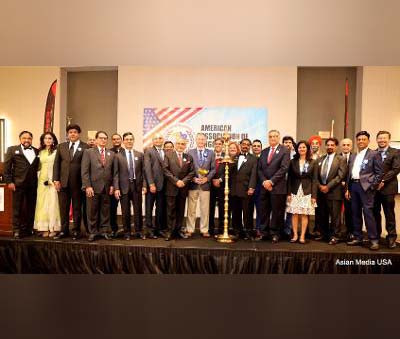 Dr. Mohanbir Sawhney, Associate Dean, (Northwestern University, Kellogg) delivered an inspirational and informative keynote speech elaborating on his experience and the roles and future of organizations like AAEIO. The speech by the Vice President 2021 Nitin Maheshwari included the plans for the upcoming initiatives taken by AAEIO and how the organization aims at supporting small businesses, fresh graduates as well as the fellow engineers from all across the globe. The president elect 2021 Ajit Pant talked about how AAEIO will act as an umbrella organization for the engineers from all streams of engineering like civil, mechanical, IT, electronics, Electrical and so on. Nag Jaiswal did the Vote of Thanks and he thanked all the sponsors, Dignitaries, AAEO Board and all the Guests for their help and support.
Dr. Mohanbir Sawhney, Associate Dean, (Northwestern University, Kellogg) delivered an inspirational and informative keynote speech elaborating on his experience and the roles and future of organizations like AAEIO. The speech by the Vice President 2021 Nitin Maheshwari included the plans for the upcoming initiatives taken by AAEIO and how the organization aims at supporting small businesses, fresh graduates as well as the fellow engineers from all across the globe. The president elect 2021 Ajit Pant talked about how AAEIO will act as an umbrella organization for the engineers from all streams of engineering like civil, mechanical, IT, electronics, Electrical and so on. Nag Jaiswal did the Vote of Thanks and he thanked all the sponsors, Dignitaries, AAEO Board and all the Guests for their help and support.